Top 4 Feature Upvote alternatives
Looking for a Feature Upvote alternative? In this post, we’ll highlight four of the most popular alternatives and help you decide whether they’re a better option for you.
Granted, Feature Upvote isn’t for everyone. If you’re looking for a complex feedback management solution with deep analytics, user segmentation, etc, here are some alternatives to consider.
Table of contents
Feature Upvote Alternatives
Aha!

Aha! has several product lines. Aha! Ideas is Aha!’s feedback management solution. It is similar to Feature Upvote but has different features.
Though feature-rich, Aha!’s feedback management solution feels awkward. It is like an add-on to Aha!’s core product. Ideas and boards are two mutually-exclusive components of the Aha! interface. For example, you have to manually assign a board to an idea, or else the idea won’t show on your feedback board.
Beyond the standard feedback board, Aha! also offers polls, an in-app feedback widget, and a live chat you can use to run something akin to online focus groups.
Like Feature Upvote, Aha! allows you to create both public and private boards, vote for features on behalf of customers, automatically send out email updates and translate boards into different languages. Aha! offers only a few major languages ( French, Dutch, Spanish, and German), whereas Feature Upvote includes more than 10 languages and lets you contribute additional ones.
With Aha! you can score ideas based on reach, need, strategy fit, and effort. This can help you estimate the impact and feasibility of each idea.
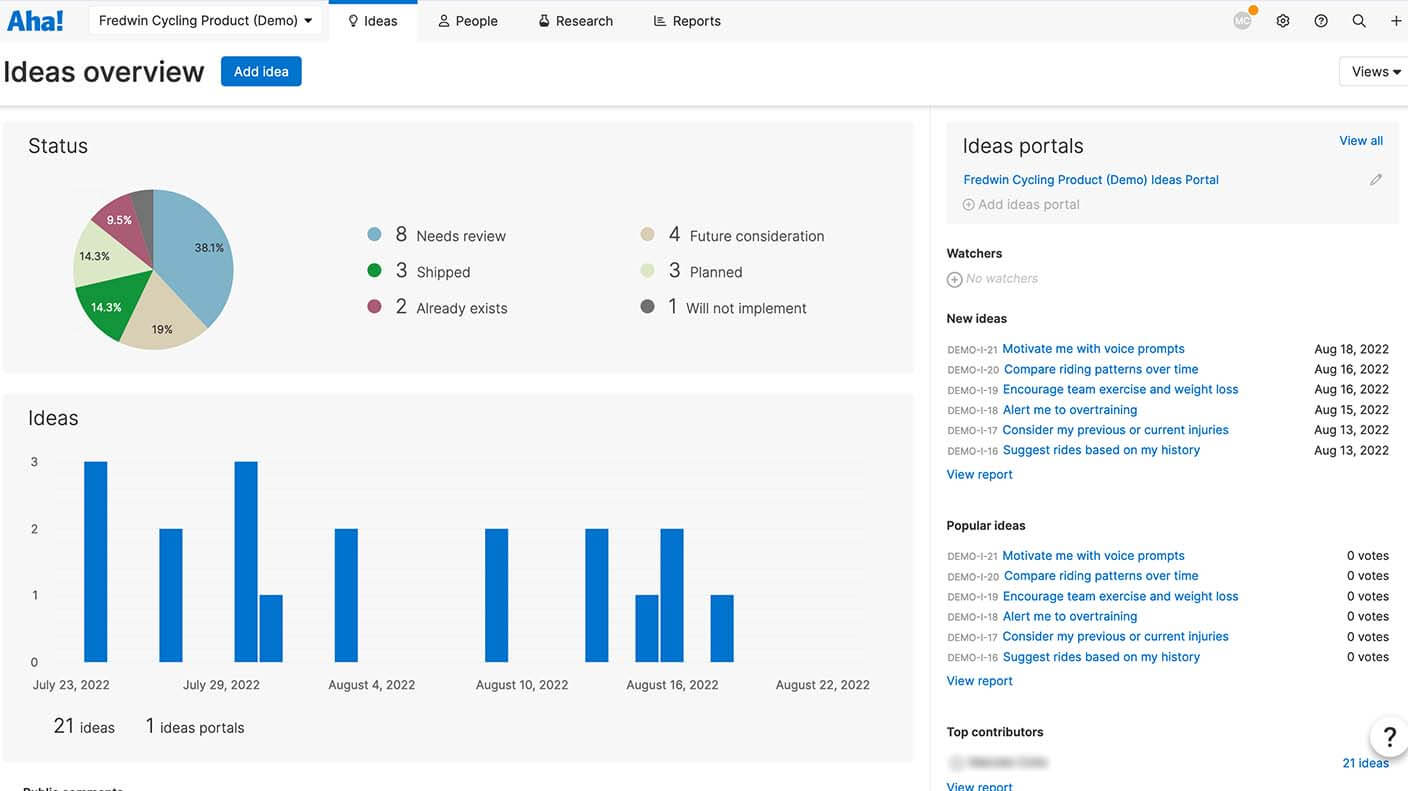
The reporting section of the Aha! dashboard is robust. You create pivot tables, lists, and graphs using data from your feedback board. You can group ideas by category, tag, contributor, and status. You can use this data to spot trends and better understand your users’ needs.
Aha! Ideas has two pricing plans: Essentials and Advanced. The Essentials plan starts at $39/user/month with a minimum of 3 paid users. That’s another way of saying it starts at $117/month with 3 admins included.
The Essentials plan does not include custom domains, board translations, proxy voting, and other features you would have access to in Feature Upvote’s Standard plan, which starts from $99/board/month.
Aha! comes with many integrations for development, communication, task tracking, analytics, and more. All but the Customer Relationship Management integrations (ie. Salesforce and Zendesk) are included in the Essentials plan.
The Advanced plan for 3 paid users would set you back $177/month.
Read more: Aha! vs Feature Upvote
Canny
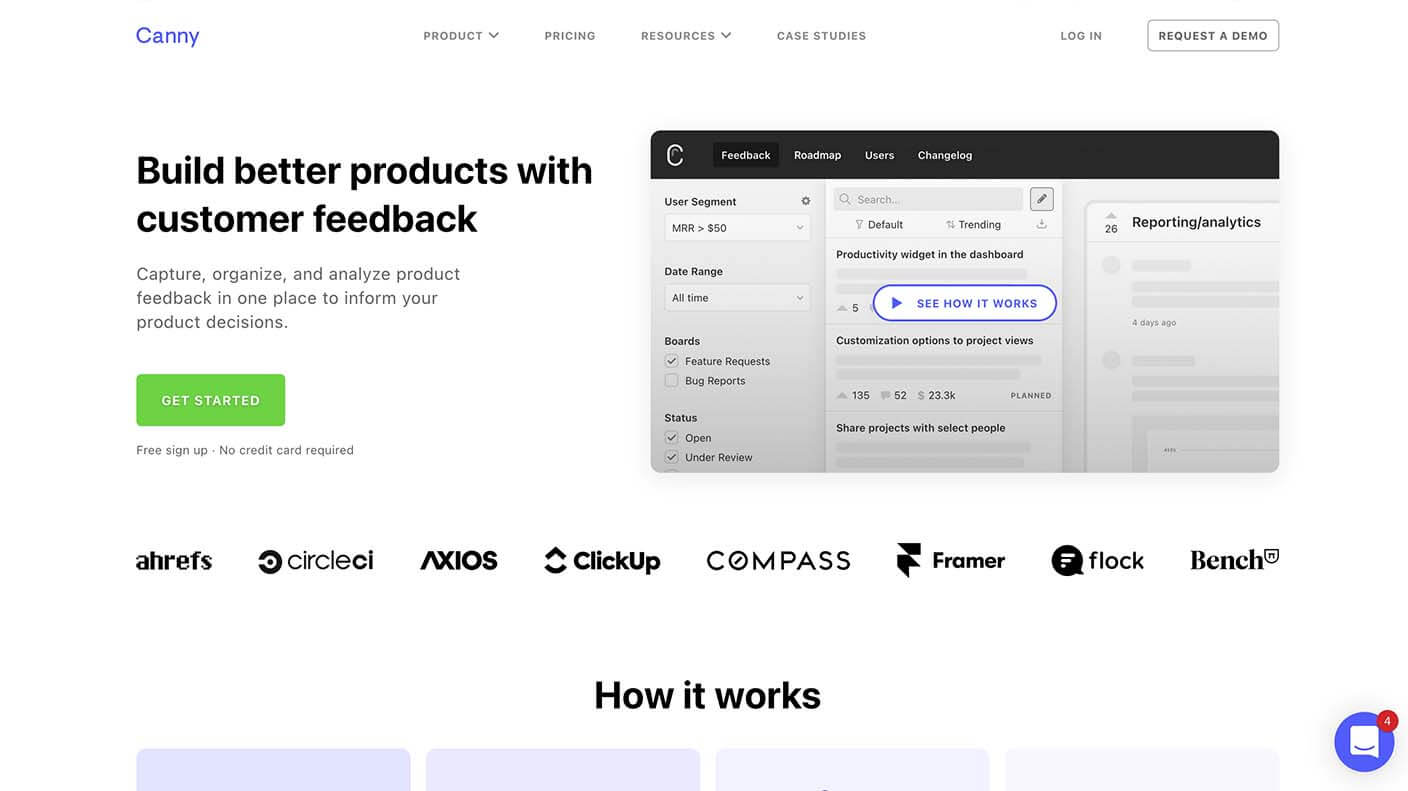
Canny is similar to Feature Upvote, but with more options for organizing feature requests. To each feature request, you can add an owner, a category, a label, a tag, an estimated delivery date, and a status. This allows you to use it as a type of issue-tracking system.
Feature Upvote’s comparable options for organizing feature requests are statuses and tags.
You can also estimate the impact and complexity of a feature in Canny. Canny then uses that data to calculate a score (ie an opportunity-cost ratio) which you can use to prioritize feature requests.
Like Feature Upvote, Canny doesn’t provide feedback analytics.

Canny requires your users to create a Canny account in order to add and vote for suggestions. This is a major drawback and is specific to Canny and UserVoice. The other tools on our list—including Feature Upvote—allow users to vote without creating an account.
Canny has a roadmap function that lets you add feature requests to a swimlane-style roadmap where features are grouped by status.
It also has integrations for 16 applications including Jira, GitHub, ClickUp, Intercom, Zendesk, and Salesforce.
Canny has an outstanding free plan which is a great option for folks that just need one feedback board, one roadmap, and a single integration.
Upgrading to Canny’s $400/month Growth plan adds many other features: private boards, private comments on issues, and custom statuses.
Read more: Canny vs Feature Upvote
UserVoice

UserVoice is the grandfather of product feedback tools. It launched in 2008 in San Francisco. Over the years, it has morphed from a simple feedback tool into a complex solution aimed at enterprises.
UserVoice starts at $699/month.
The software is best suited for product managers looking to collect powerful analytics and sales from their product feedback. For example, UserVoice helps you estimate the future monetary value of a feature.
The UserVoice dashboard shows you a breakdown of ideas with the most votes, those with the most interactions, and those that were recently created. You can also track your team’s effectiveness at moving ideas through your funnel and engaging with your users.
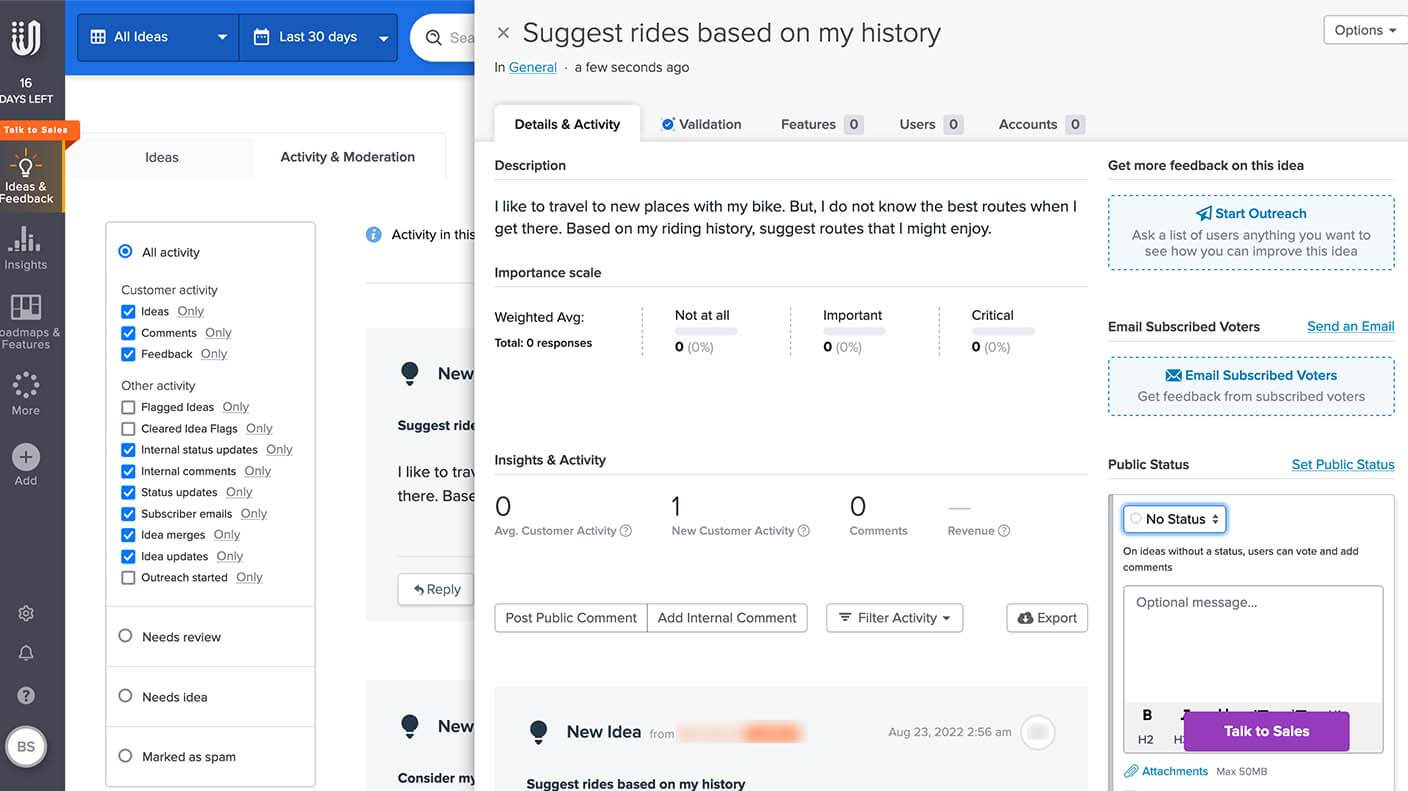
UserVoice is a comprehensive feedback management and roadmapping tool. Expect it to replace—or at least overlap—your existing workflow.
UserVoice has lots of options for customisation and advanced functionality which makes it complex to get started with. Your team may experience “new software fatigue” while they transition.
With UserVoice, you can collect feedback through a web portal or using an in-app widget. Your customer support team will also be able to use a “contributor sidebar”. It is a browser extension that allows them to record user feedback from whatever browser window they’re on.
You can integrate UserVoice with Fullstory, Salesforce, Gainsight, Microsoft Teams, Slack, Jira, Azure DevOps, and Zendesk.
Because it targets enterprise clients, UserVoice offers a white-glove customer experience. For that reason, you won’t be able to pay for the software without first talking to their sales team. However, they have a free trial if you want to see it for yourself.
Read more: UserVoice vs Feature Upvote
Pendo
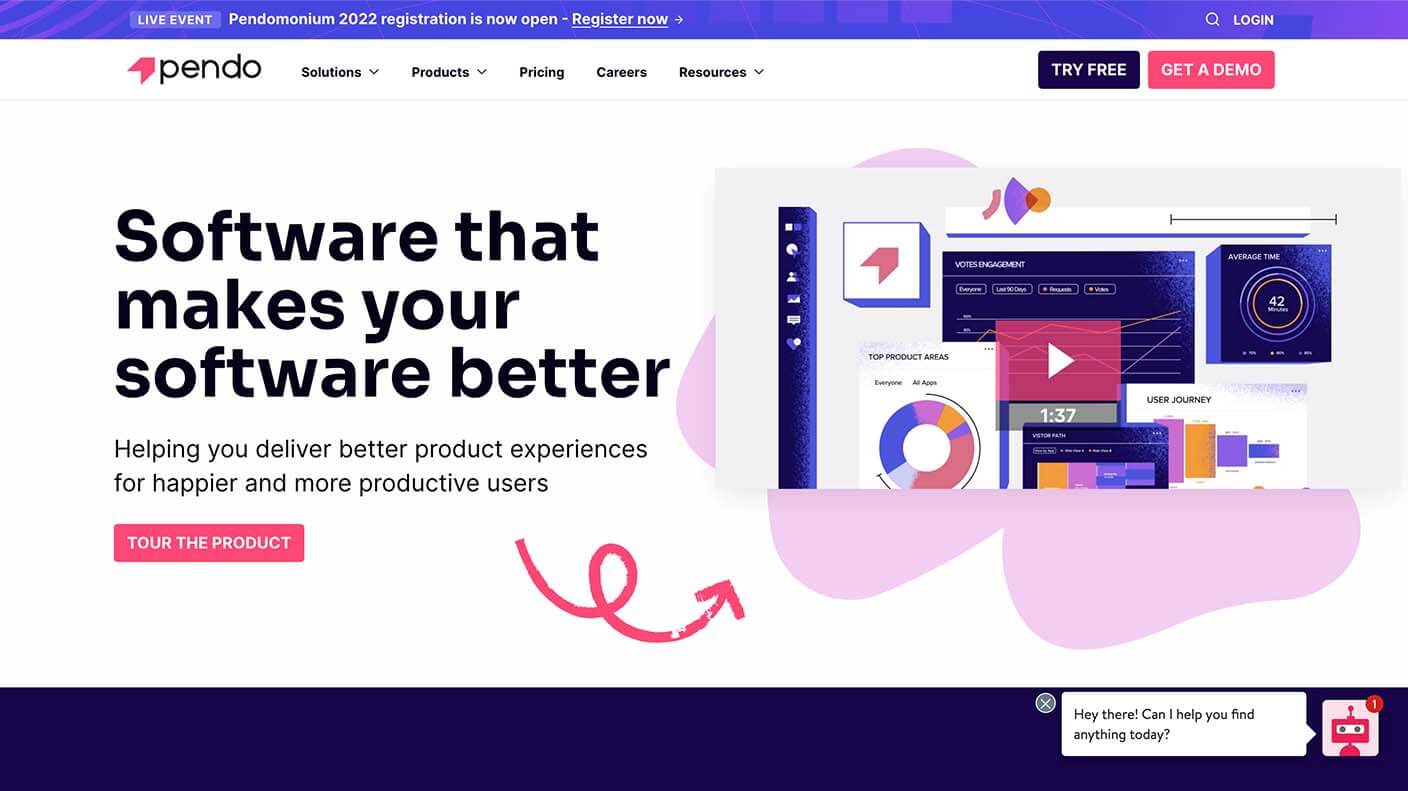
Pendo is a product management powerhouse. Feedback management is just one of their product offerings. Pendo also offers roadmapping, a chat widget, in-app usability guides, and exhaustive tracking and analytics data.
Pendo Feedback (formerly Receptive) is feature-rich. It attempts to quantify revenue opportunities to help you prioritise features beyond mere popularity. You can create custom reports, export them, and share them with your team. And you can build roadmaps at no extra cost.
Pendo has integrations available for Jira, Salesforce, Microsoft Teams, Zapier, Zendesk, Intercom, and Segment.
A downside of Pendo is its complexity. Users report a painful setup and a steep learning curve. The user interface is less intuitive than the alternatives.
Here’s what a former Pendo customer told us after switching to Feature Upvote:
It’s a fairly sophisticated tool that attempts to go beyond simple vote counting and uses an algorithm to decide on the most important thing for you to work on. If you just want to use the tool as one input in a larger strategy it’s actually quite hard to understand which items are most voted on. For our particular way of working, we prefer to have the raw counts and make our decisions about level of importance in the broader sense.
Pricing for Pendo Feedback isn’t disclosed on their site. But various forums mention monthly prices in the 3- to the 4-figure range.
Why Feature Upvote
Like Canny and UserVoice, we’re a long-established company with a mature product (launched in 2017). We’re self-funded which has allowed us to grow sustainably and keep our product purpose-built and easy to use.
Here is why product managers choose Feature Upvote over alternatives:
✅ Transparent pricing system
Feature Upvote has one fixed price per board per month. All features are included in the Standard Plan. You can have unlimited users and contributors from the very start. No upgrade. No sales calls.
Alternatives lock features for higher pricing tiers and limit the number of users or feature requests you can receive. For white-glove solutions like Pendo, you can also expect salespeople to regularly try to upgrade you to a higher plan.
✅ Simpler product
Pricing isn’t the only thing about Feature Upvote that’s simple. The product itself is simple too. And we put lots of effort into keeping it that way.
Competing products are much more complex and much more expensive. For the functionality we’re looking for – a simple feedback community – the features we get are actually better than I expected and at a price that we can afford.
Untangle’s VP of Product Management, Heather Paunet
Feature Upvote isn’t packed with fancy features. It does what it was built to do: collect and prioritise feature requests.
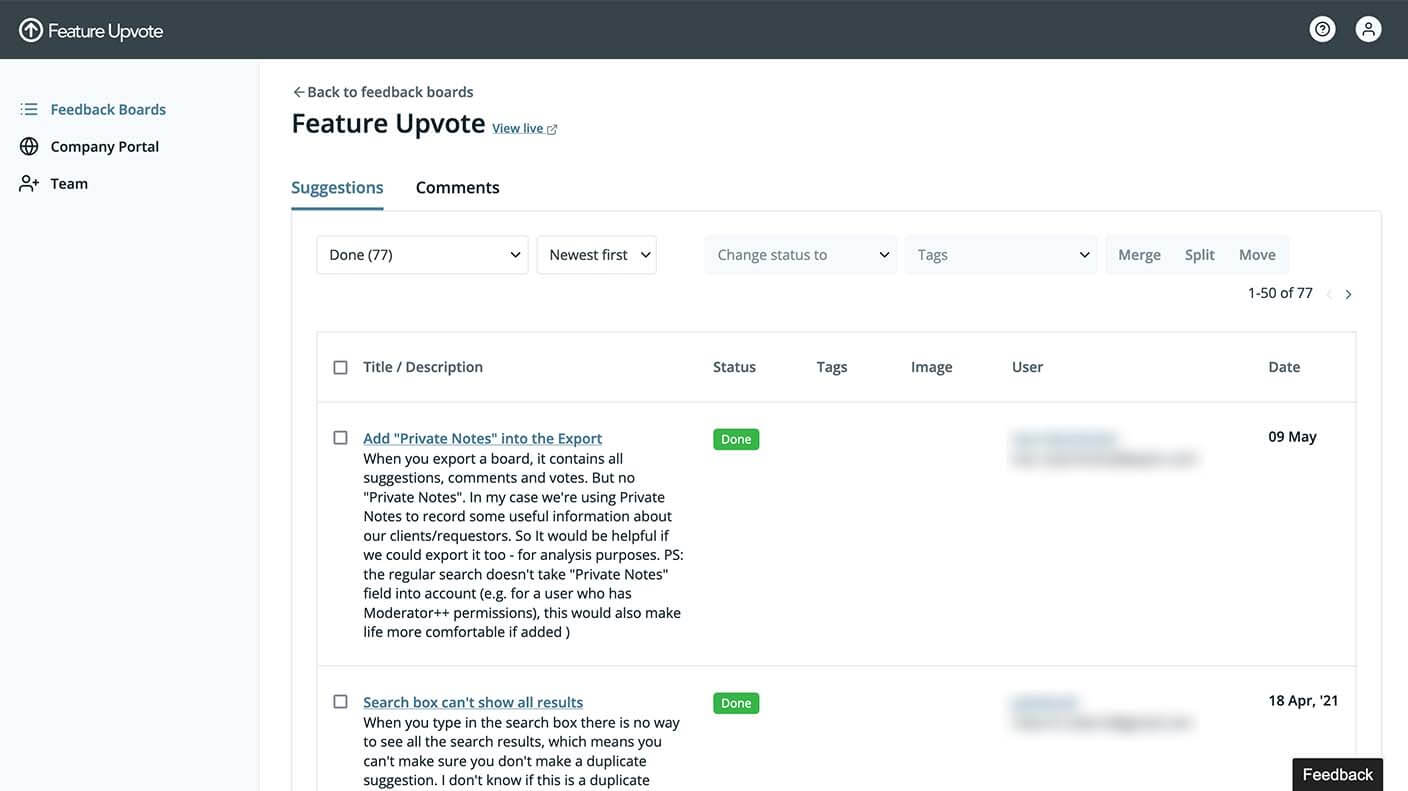
Underlying that simplicity are many “quality of life” features that make your job easier. You can create private and public feedback boards. You can vote on behalf of customers. You can automatically notify users when their suggestions get released or updated. You can use a custom domain and customize your board with CSS. You can track your board in Google Analytics. And much more.
It takes about 30 seconds to get a Feature Upvote board up and running. You don’t need a guided tour, demo call, or any other sort of handholding to get started. (But if you do want a guided tour, we have a demo video for you.)
You know those tools where you have to go in and get data and you almost have to psych yourself up. A little part of you dies every time you have to go and log in. I never feel like that with Feature Upvote. Throughout the day I’m constantly opening it – I have the tab there pretty much all the time and I can jump over to read something quick, and then jump back out of it.
Dockwa’s VP of Product Development, Jeremy Crane
✅ GDPR-ready
As a European company—headquartered in Spain with its data servers in Ireland—Feature Upvote is fully-compliant with the General Data Protection Regulation (GDPR).
Where many companies work with boilerplate GDPR policies, we work with a lawyer specializing in European data regulation to ensure we follow the GDPR – both to the letter and in the intended spirit.
In one of my previous jobs, I used to work with UserVoice. So I knew tools like this. But UserVoice wasn’t a European provider and GDPR was important for us. That’s why we looked for a European provider like Feature Upvote.
Star Money’s Head of Product Development, Rainer Gibbert
We have clear and strict privacy practices and a no-nonsense adherence to the GDPR. And as our customer, your data is fully hosted in the European Union.

✅ Clear security and privacy practices
We take security very seriously and explain our practices in detail on our website.
Amongst others, we run our own security audits. We use Amazon’s AWS and follow best practice guides. Our database uses encryption at rest and we regularly back up all of our (and your) data. Access to any resources is protected by 2-factor authentication (2FA) and a secure password stored in a password manager.
While comparing different feature request management software, I had trouble identifying the legal entity, country of operation, and data security processes behind them. This is standard information required for the professional operation of a cloud service. Feature Upvote shined here, and I was quickly able to get an OK from both IT and our Data Protection Officer.
Tribe29’s Head of Product Management, Thomas Lippert
✅ Excellent localisation and translations
Because we’re European, we understand not all of your customers are going to speak English. We’ve translated the Feature Upvote user interface so that your customers across the globe can share their feedback about your product.
Feature Upvote supports the Czech language! We are a small country in the middle of Europe and I did not expect to see Czech on the list of languages.
eWay-CRM’s CEO, Jan Lalinsky
As of 2022, Feature Upvote has been translated into 18 languages, including French, Spanish, German, Japanese, Dutch, and Swedish.
We use professional translators as well as willing customers to make sure the translations are not only accurate but human.
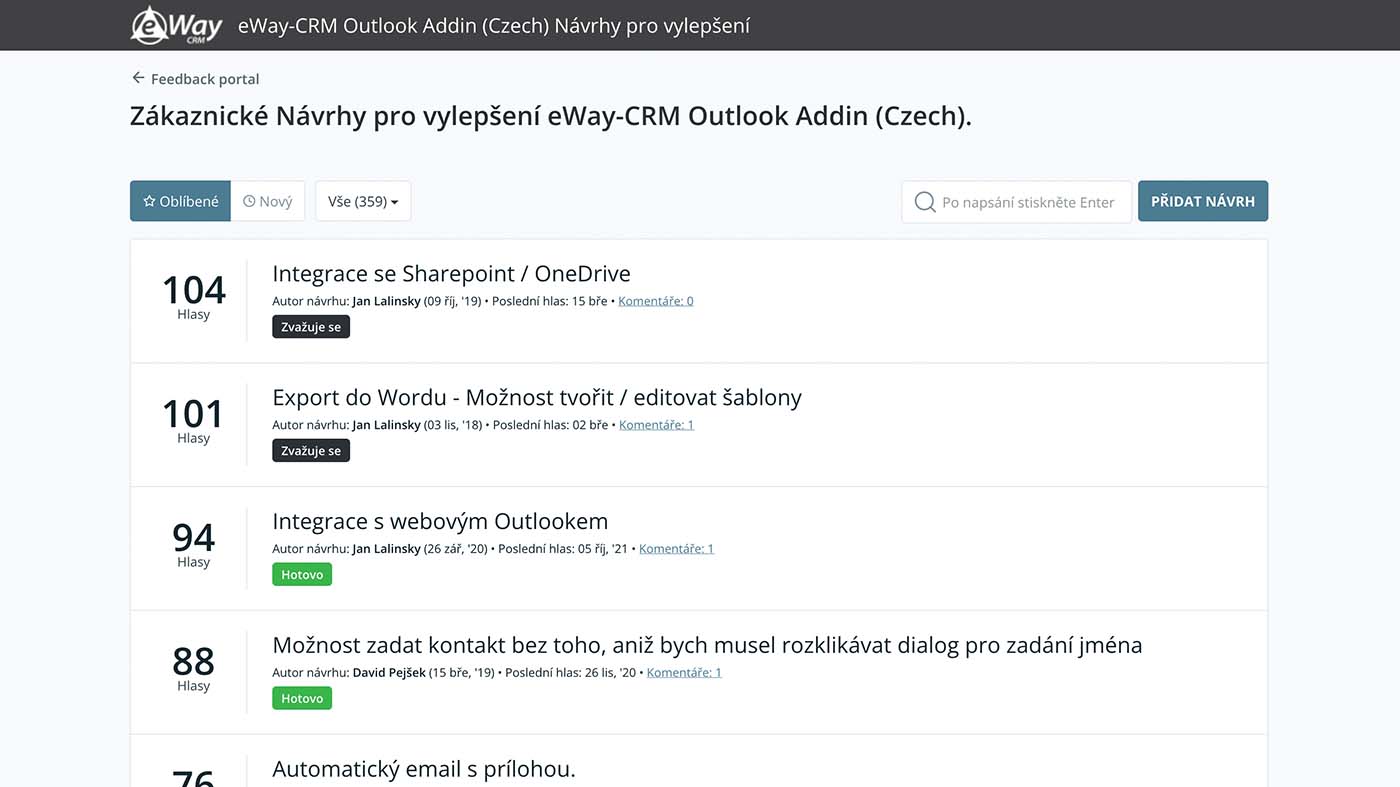
✅ Mature processes
We’ve been in business since 2017. Since then, we’ve worked hard to ensure Feature Upvote is extremely stable and reliable. We often go a year or longer with zero downtime.
We offer integrations with popular product management tools, like Jira, Zendesk, and Slack. And because we also integrate with Zapier, you can also import and export data to Salesforce, Discord, Productboard, and dozens of other tools.
✅ Close to customers
Feature Upvote is not for everyone. It does what it was built to do and not much else. Instead of churning out new features, we focus on making our product reliable and talking with our customers.
The collaboration has been great. The Feature Upvote team is open to feedback. They get back to their users and ask them for feedback and what could be done better.
Star Money’s Head of Product Development, Rainer Gibbert
We use Feature Upvote ourselves and we love it. But we understand every company has different needs. If you don’t like our product, we’ll do our best to make it right or we’ll refund your subscription, no questions asked.
Your satisfaction is our priority. And because we’re self-funded, profitable, and growing sustainably, there’s no one to pressure us to change anytime soon.
Who uses Feature Upvote?
Our broad customer base includes banks, government, health care, and tech start-ups. We have a strong foothold in Europe because of our GDPR practices, but product managers also use our software in New Zealand, Australia, North America, and all over the globe.
